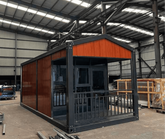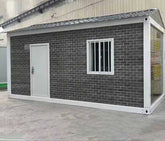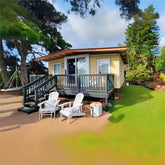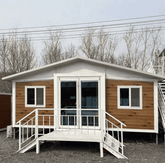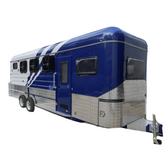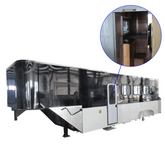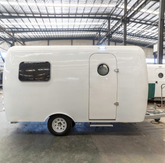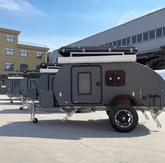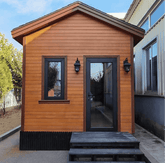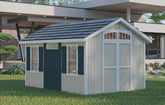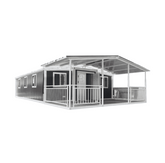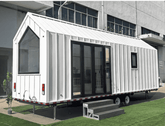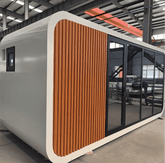Are Tiny Homes a Good Investment in the U.S.?
Tiny homes have become a big trend in the United States. You see them on social media, on YouTube, and even on home renovation shows. Many people love the idea of living small, saving money, and enjoying a simple life. But a common question still comes up: Are tiny homes a good investment in the U.S.?
The honest answer is this: a tiny home can be a good investment, but only if you understand how they work, what they cost, and how they hold their value. In this article, we will break down everything in steps so you can decide with confidence.
1. What Makes Tiny Homes Different?
A tiny home is usually between 100 and 400 square feet. Some are built on foundations. Others are built on wheels so they can move like an RV.
Because they are small, they cost much less than traditional homes. Many Americans buy tiny homes to save money, reduce stress, or travel more. But when we talk about “investment,” we must look at value, income, resale, and long-term benefits.
2. Do Tiny Homes Appreciate in Value?
This is the biggest question.
Traditional homes usually go up in value because the land becomes more expensive over time. But most tiny homes do not come with land. And if a tiny home is built on wheels, it may lose value like a vehicle.
However, that does not mean tiny homes cannot be a good investment. It simply means you must know where the value comes from.
Here are a few situations where tiny homes hold their value better:
When the tiny home is placed on owned land
When it is used as a rental
When it is built with high-quality materials
When local zoning laws support tiny living
When demand in your area is strong
If you treat it like an asset with a purpose, it can become a strong investment.
3. Can You Make Money With a Tiny Home?
Yes, you can. In fact, many people buy tiny homes not to live in them, but to earn extra income.
Here are common ways tiny homes make money:
Short-Term Rentals (Airbnb, VRBO)
Tiny homes are extremely popular as vacation rentals. Guests love the unique look, cozy feel, and lower cost. If you place a tiny home in a good tourist area, it can bring strong monthly income.
Long-Term Rentals
Some renters want an affordable place to live. A tiny home gives them privacy at a lower cost. This can generate stable monthly rent.
Backyard ADU (Accessory Dwelling Unit)
Many homeowners add tiny homes to their backyard to create an extra housing unit. This can give you:
Rental income
Space for family
A guest room
Higher property value
Off-Grid or Rural Rentals
In quiet, peaceful areas, tiny homes attract people who want a weekend getaway. These rentals often book months in advance.
So yes, tiny homes can become a steady income source if you plan wisely.
4. Are Tiny Homes Cheaper to Maintain?
Most tiny homes cost less to maintain. You use less electricity. You heat and cool a smaller space. Repairs cost less because there is less material.
This saves money every month, which is also part of your investment returns.
But there are still costs you must keep in mind:
Land or parking fees
Utility hookups
Insurance
Repairs
Permits in some states
Winter protection in cold climates
If you understand these costs before buying, your investment becomes safer and smarter.
5. What About Building or Buying Costs?
This is where many people make mistakes. They see online videos showing tiny homes built for $10,000 or $20,000. In real life, high-quality tiny homes normally cost more.
A typical tiny home in the U.S. ranges from $25,000 to $120,000, depending on size, materials, and design. Custom models may cost even more.
But the key benefit is this: even at $70,000 or $80,000, a tiny home is still far cheaper than a traditional home. And if you use it for rental income, you can recover the cost much faster.
6. Zoning and Legal Issues
This is where investments can get tricky.
Some states and cities have friendly laws for tiny homes. Others have strict rules. Before you buy, you must check:
Can you place a tiny home on your land?
Is a foundation required?
Are tiny homes on wheels allowed?
Is overnight rental allowed?
Do you need special permits?
If the area supports tiny home living, your investment becomes much stronger.
7. Do Tiny Homes Sell Easily?
Tiny homes usually sell faster when:
They are well-built
They are in good condition
They have modern interiors
They include land
They are in popular vacation or rental areas
People love the idea of owning a tiny home. So if yours is attractive and ready to live in, you will likely find buyers.
So… Are Tiny Homes a Good Investment in the US?
Here is the simple answer:
Yes, tiny homes can be a good investment in the U.S., but only when you buy with a clear purpose.
A tiny home is a good investment if:
You want rental income
You want an affordable housing option
You want to place it on your own land
You want a low-cost lifestyle
You want to earn money from Airbnb guests
You choose a location with supportive laws
A tiny home may not be a good investment if:
You want fast appreciation
You buy in an area with strict rules
You expect land-like resale value without owning land
You do not research costs and permits
Tiny homes work best when you treat them like a tool. They can save money. They can earn money. They can lower stress. They can help you start a new lifestyle. But you must run the numbers and understand the rules.
Final Thoughts
A tiny home can be a wonderful investment for many Americans. It gives freedom, low expenses, and the chance to earn income. But every investment requires planning. If you take time to choose the right location, design, purpose, and budget, your tiny home can give you long-term financial and personal benefits.



